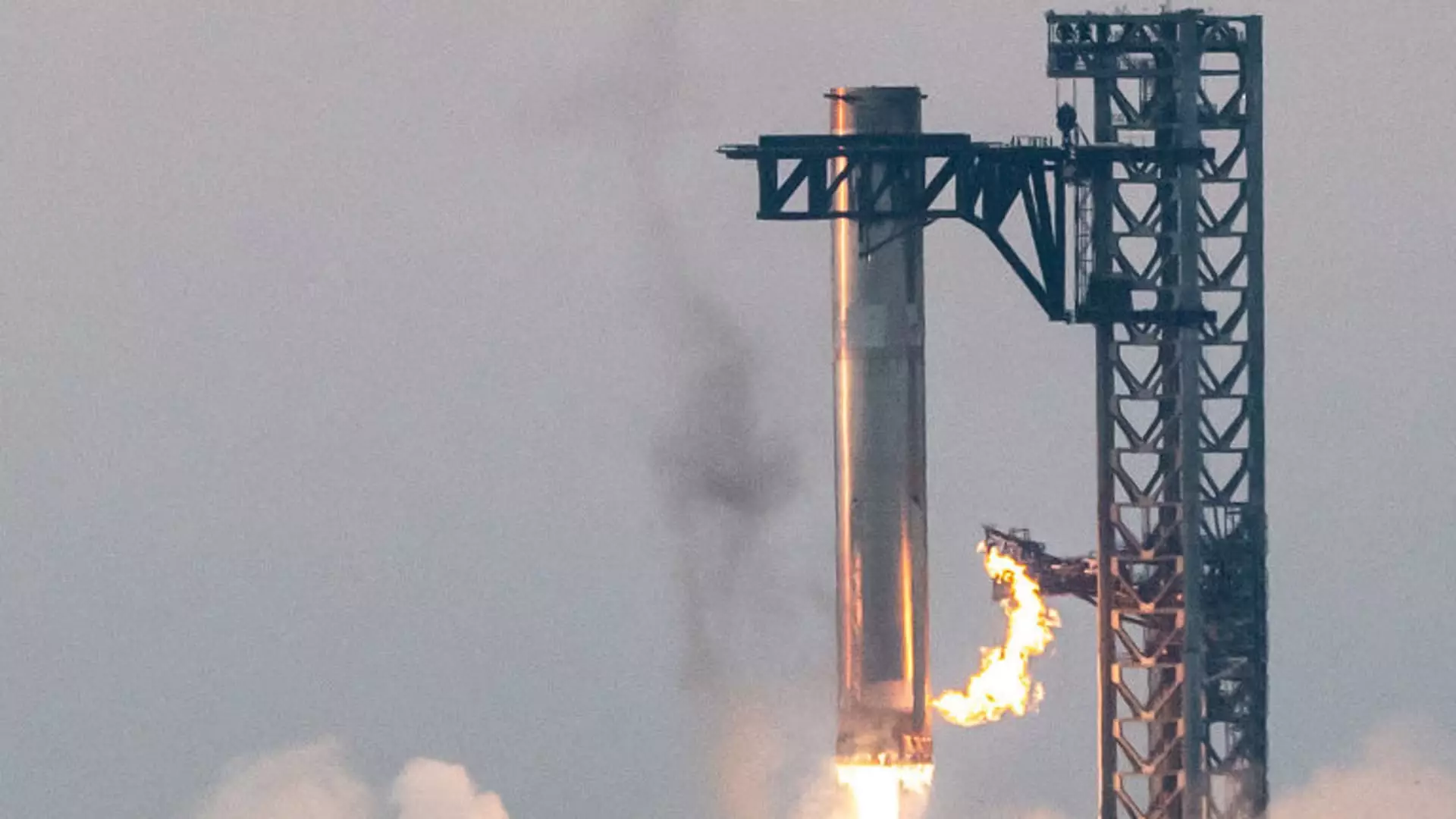The realm of space exploration has dramatically advanced in recent years, thanks in large part to emerging technologies and innovative companies. One of the frontrunners in this new age of space travel is SpaceX, which has reached significant benchmarks with its Starship program. The most recent test flight of the Starship rocket on a sunny Sunday morning marked a substantial step forward—one that could redefine our approach to space missions. This article delves into the ramifications of this test, the technology involved, and what it means for the future of space travel.
On a clear morning at approximately 8:25 a.m. ET, SpaceX propelled its fifth test flight of the Starship rocket from its Starbase facility in Texas. This particular flight was heralded not merely for its launch but for the impressive feat of capturing the Super Heavy booster upon its return—a landmark achievement in the company’s journey toward creating a fully reusable rocket system. This reception can be likened to catching a feather mid-air, an act that stirred excitement among viewers and experts alike. As SpaceX communications manager Dan Huot expressed, witnessing the catch was akin to witnessing magic, capturing the sheer brilliance of engineering.
The sudden applause that followed the booster’s landing was a testament to the dedication and intricate planning that went into this moment. The successful touchdown of the booster on the “chopstick” arms of the launch tower is not merely a technical accomplishment; it underscores the vision that drives SpaceX toward a goal of sustainable space travel.
The Starship rocket is designed with an eye toward the future, envisioned as a vessel for both crew and cargo that could travel regularly beyond Earth. During this successful fifth flight, Starship not only separated from the booster but also traversed approximately half of the Earth’s circumference before reentering the atmosphere. This journey culminated in a controlled splashdown in the Indian Ocean, showcasing the rocket’s advanced capabilities.
While the current mission did not transport astronauts, SpaceX is channeling its ambitions into realizing hundreds of Starship missions in the coming years. Each previous flight has set a new benchmark, and with each launch, lessons learned are meticulously integrated into the design and execution of subsequent missions. This iterative approach is essential for the evolution of space travel technologies, ultimately paving the way for complex lunar and interplanetary missions.
A Partnership with NASA and Future Objectives
Elon Musk’s vision aligns closely with NASA’s Artemis program, which aims to return astronauts to the Moon by leveraging the capabilities of SpaceX’s Starship. NASA has entrusted SpaceX with a prominent role in this mission by awarding them a multibillion-dollar contract to utilize Starship as a crewed lunar lander. This partnership highlights the synergistic relationship between private enterprise and governmental initiatives, which may lead to novel advancements in space exploration.
NASA Administrator Bill Nelson’s acknowledgment of SpaceX on social media emphasizes the importance of continual testing, which lays the groundwork for the ambitious objectives of the Artemis program. The successful launch and recovery of Starship’s booster serve as a stepping stone for broader lunar expeditions and beyond.
The Regulatory Landscape and Environmental Considerations
Despite the remarkable success of the recent launch, it’s noteworthy that SpaceX has faced challenges from regulatory bodies as well. The Federal Aviation Administration (FAA) expedited the licensing process for this test flight, a shift from previous estimates. However, this did not come without criticism from SpaceX, as Musk and team have expressed frustrations regarding perceived “superfluous environmental analysis” that could hinder prompt advancements in technology.
Environmental compliance issues have also plagued SpaceX following unauthorized water discharges at its Texas launch site. As the company ventures into these bold projects, navigating the regulatory framework while advocating for efficiency will be crucial.
Engineering Excellence: The Mechanics Behind Starship
Starship stands as the tallest and most powerful rocket ever constructed, dwarfing its predecessors. The rocket’s impressive height of 397 feet, coupled with the Super Heavy booster’s 232 feet, creates a formidable launch system. These rockets are adorned with a total of 39 Raptor engines, which together generate an astonishing 16.7 million pounds of thrust, making it twice as powerful as NASA’s Space Launch System.
Furthermore, Starship is engineered to utilize liquid oxygen and liquid methane as fuel, showcasing an environmentally conscious approach to space travel. This design not only enhances operational efficiency but also aligns with growing environmental considerations in aerospace engineering.
The recent test flight of SpaceX’s Starship represents more than just a regulatory win or a technical achievement—it signifies a monumental shift in how society approaches space exploration. As SpaceX pushes forward with its goals of reusability and ambitious missions, the path toward sustainable interplanetary travel seems increasingly attainable. With each successful launch and catch, the horizons expand for both manned and unmanned missions, capturing the imagination and inspiring generations to explore the final frontier. As we look to the skies, the dreams of space travel are no longer a matter of “if,” but “when.”

Leave a Reply